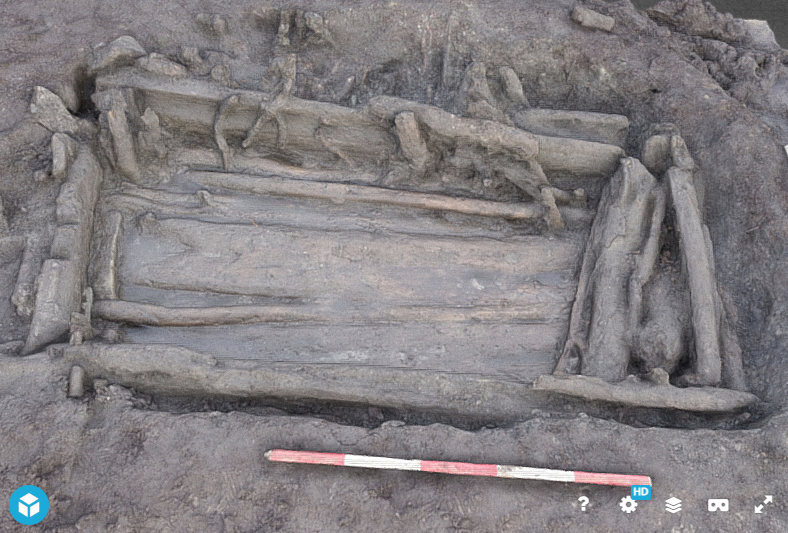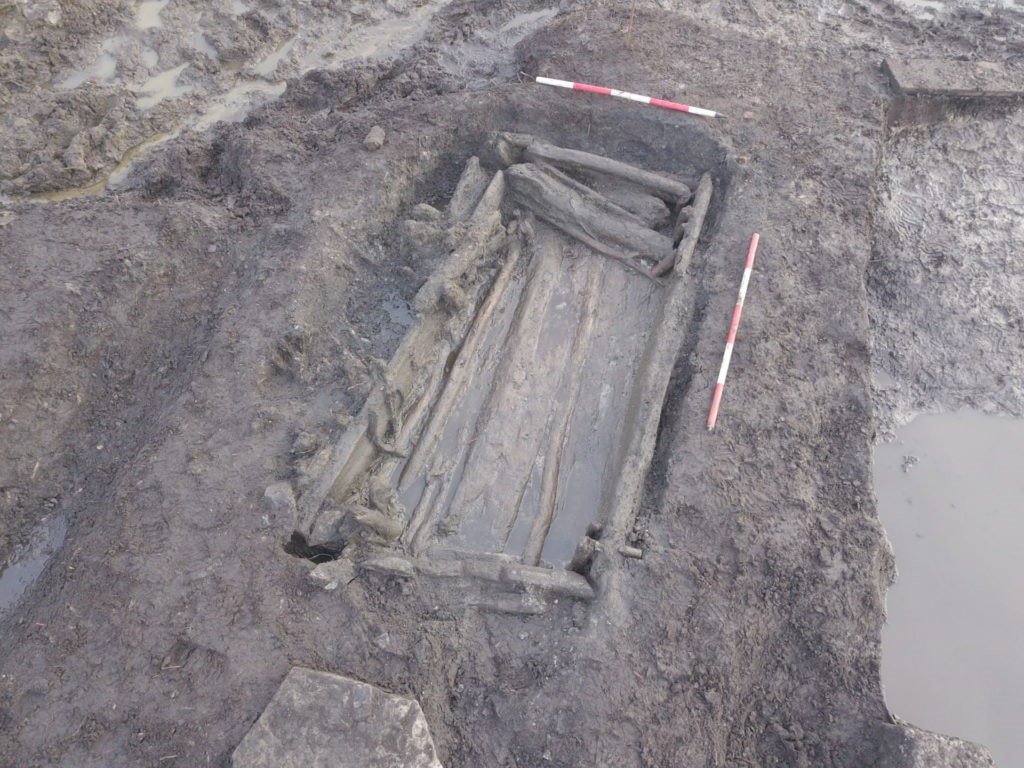𝗧𝗵𝗿𝗲𝗮𝗱 🧵
As part of works along the N26 Cloongullaun Bridge Realignment Scheme, Co. Mayo, we completed the excavation of a large intact 𝗯𝘂𝗿𝗻𝘁 𝗺𝗼𝘂𝗻𝗱 *and* two (2⃣) underlying 𝘄𝗼𝗼𝗱 𝗹𝗶𝗻𝗲𝗱 𝘁𝗿𝗼𝘂𝗴𝗵𝘀!
Read on for more! ⤵️
Clients: @MayoCoCo @TIINews


As part of works along the N26 Cloongullaun Bridge Realignment Scheme, Co. Mayo, we completed the excavation of a large intact 𝗯𝘂𝗿𝗻𝘁 𝗺𝗼𝘂𝗻𝗱 *and* two (2⃣) underlying 𝘄𝗼𝗼𝗱 𝗹𝗶𝗻𝗲𝗱 𝘁𝗿𝗼𝘂𝗴𝗵𝘀!
Read on for more! ⤵️
Clients: @MayoCoCo @TIINews



𝗕𝘂𝗿𝗻𝘁 𝗠𝗼𝘂𝗻𝗱: We discovered a large burnt mound of charcoal and heat shattered stone. The mound was divided into quarters (quadrants) and opposing quadrants excavated to give cross sections across the mound layers. This revealed several similar layers of material. 







𝗪𝗼𝗼𝗱 𝗹𝗶𝗻𝗲𝗱 𝘁𝗿𝗼𝘂𝗴𝗵 1⃣ (021)
Orientated E-W. Cut directly into the peat and located at the northern edge of the main mound. A layer of sand and moss had been laid down across the base of the feature. This is often interpreted as a filtration layer (see O’Kelly 1954)



Orientated E-W. Cut directly into the peat and located at the northern edge of the main mound. A layer of sand and moss had been laid down across the base of the feature. This is often interpreted as a filtration layer (see O’Kelly 1954)




𝗪𝗼𝗼𝗱 𝗹𝗶𝗻𝗲𝗱 𝘁𝗿𝗼𝘂𝗴𝗵 2⃣ (022)
Located along the S side of the mound. Finished with a brushwood and roundwood lining and a stone platform (hearth) was located at the eastern end, in a shallower semi-circular cut. Timber lining consisted of 52 individual wood elements.



Located along the S side of the mound. Finished with a brushwood and roundwood lining and a stone platform (hearth) was located at the eastern end, in a shallower semi-circular cut. Timber lining consisted of 52 individual wood elements.




𝗪𝗼𝗼𝗱 𝗹𝗶𝗻𝗲𝗱 𝘁𝗿𝗼𝘂𝗴𝗵𝘀
The traditional interpretation of these typically #BronzeAge monuments is that they were cooking sites (see early texts, folk memory and experimentation). Probably, they were multifunctional or different sites were used for specific purposes.
The traditional interpretation of these typically #BronzeAge monuments is that they were cooking sites (see early texts, folk memory and experimentation). Probably, they were multifunctional or different sites were used for specific purposes.

You can read more about this spectacular site in Bruce Sutton's brilliant blog: rubiconheritage.com/blog/the-sharp…
Credits: text and images from Bruce's blog.
Thanks to all involved!
Credits: text and images from Bruce's blog.
Thanks to all involved!
Watch this beautifully-illustrated short talk by our own Bruce Sutton on our @YouTube channel for more information on these cracking #BronzeAge finds:
• • •
Missing some Tweet in this thread? You can try to
force a refresh




